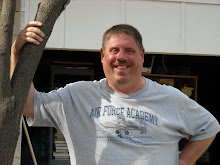
Most of the people you talk to have never heard of Civil Air Patrol. If they have heard of it, they don't don't know what it does or even if it's still around. So, I will try to give a short desrciption of the organization. First off, Civil Air Patrol or CAP(That's C-A-P when you say it. If you go around talking about CAP(like the thing you wear on your head) members tend to roll their eyes and explain the difference) is a non-profit corporation and the civilian auxilliary of the United States Air Force. CAP was founded on Dec. 1, 1941 under the Office of Civilian Defense of the War Department mostly due to the influence of Mr. Gill Robb Wilson, an aviation writer and leader, and under the direction of former NYC mayor Fiorello H. Laguardia, the director of the OCD. Major General John F. Curry was the first national commander.
Civil Air Patrol's most famous and visible job during the early days of WWII was the use of CAP planes to fill the gap in coastal patrol and anti-submarine protection for ships operating off the Atlantic coast and in the Gulf of Mexico. CAP pilots and observers flying general aviation type aircraft patrolled the coasts looking for German U-boats menacing Allied ships. At first these planes were unarmed. After several incidents in which CAP planes spotted enemy subs and had to watch them escape before armed military ships or aircraft arrived, CAP began jury-rigging mounts for small bombs and depth charges on their aircraft. The sights were also homemade and very crude and bombing techniques developed by trial and error. But CAP aircrews did attack at least 57 enemy subs and sank at least two with several more "probables". Twenty-six CAP members lost their lives in the 18 months of the mission. Other CAP missions were patrolling the U.S. borders with Mexico to prevent enemy infiltration, towing targets gunnery practice, doing small scale courier and cargo flights, and the activity that CAP is most known for today, search and rescue.
The picture here is another one from CAP's online museum at www.gocivilairpatrol.com.

No comments:
Post a Comment